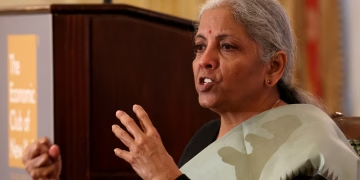Background: SNAP in Texas
The federal SNAP programme provides food assistance to low‑income households across the United States. In Texas alone, more than 3.4 million people — including an estimated 1.7 million children — rely on SNAP benefits each month.
Because SNAP is federally funded and administered at the state level via agencies such as the Texas Health and Human Services Commission (HHSC), any federal disruption or policy shift can have immediate impact on Texas households.
What Greg Abbott Announces
Governor Abbott has been involved in several policy moves related to SNAP. For example, in August 2025 he announced that Texas won federal approval for a waiver to restrict use of SNAP benefits to exclude sweetened drinks and candy beginning April 1, 2026.
More broadly, amid the looming federal budget impasse and potential SNAP funding disruption, Abbott has been under pressure regarding how Texas should respond — particularly with suggestions that the state adopt work requirements for SNAP recipients or tighten eligibility.
The Funding and Policy Storm
Federal Shutdown Impacts
Because of the federal government shutdown, SNAP benefits are at risk of being paused in November. In Texas, the halt would affect roughly 3.5 million people, with an estimated $614 million in benefits that would normally flow to Texas households.
Lawmakers and food‑bank officials warn that a cut‑off would have cascading effects — not only on families’ ability to buy groceries, but on local economies that rely on SNAP dollars circulating.
Work Requirements & Eligibility Changes
At the federal level, recent legislation and tax‑and‑spending bills include tighter work requirements for SNAP, raising the age threshold and increasing hours required for able‑bodied adults without dependents.
In Texas, these federal changes mean the state must consider how to comply or how to offset the impact on households, especially if federal funds shrink or conditions change.
Abbott’s Response & State Options
Texas Democrats have called on Governor Abbott to declare a state of emergency and direct state funds to keep SNAP benefits flowing in the event of a federal cut‑off. They reference past occasions when Abbott used his executive authority during crises (COVID‑19, Hurricane Harvey, Uvalde shooting) to access emergency funds.
Governor Abbott’s office, however, has said the immediate solution is for Congress to end the shutdown and restore funding. The state has pointed beneficiaries to existing programmes (such as WIC) and 2‑1‑1 resource lines.
Some of the key practical options for Texas include:
- Tapping the state’s Economic Stabilization Fund (rainy‑day fund) to support benefits temporarily.
- Using contingency funds via HHSC for short‑term assistance.
- Modifying eligibility or work‑requirement policies to align with new federal rules or to mitigate disruption.
- Designing state‑level wrap‑around programmes (food banks, local assistance) if federal benefits are delayed or reduced.
Stakes & Impacts
On Families and Communities
If SNAP benefits pause or decline, families may face immediate food insecurity: missed meals, skipped groceries, reliance on food banks. The ripple effect: local stores lose sales, food‑banks experience more demand, stress on the social‑safety net intensifies. In Texas counties with high food‑insecurity rates, the impact could be severe.
On the State Economy
SNAP spending supports local economies, especially in lower‑income areas. A sudden drop in benefit disbursements means fewer dollars circulating in grocery stores, fewer jobs connected to food retail, more pressure on local charities. Texas stands to lose not just human welfare but economic volume.
On Political Terrain
Governor Abbott faces a dual pressure: stating‑state control and fiscal conservatism, while also being held accountable by constituents if benefits drop. Republican‑led states often emphasise work requirements and tighter oversight — but the optics of increased hunger or cut benefits create political risk.
What Happens Next
There are several scenarios to watch:
- Federal Funding Restored: If Congress ends the shutdown and restores SNAP funding in time, Texas may avoid major disruptions.
- Short‑Term State Intervention: Abbott may declare emergency funds or authorize state funding to cover November benefits temporarily. If not, the gap may hit households.
- Work Requirements & Policy Shift: Texas may implement or prepare to implement stricter work/eligibility rules in response to federal changes.
- Long‑Term Structural Change: Texas might design new state rules around SNAP: health‑focused waivers (as seen with the candy/soft‑drink restriction), higher work requirements, or partial benefit reductions.
Challenges & Unanswered Questions
- Who will meet new work‑requirements? Changes in eligibility may disproportionately affect adults without dependents, veterans, youth aging out of foster care, or those with unstable jobs.
- Can Texas truly fill a gap alone? The state has budget reserves, but using them for a large population benefit raises questions of prioritisation and sustainability.
- What about rural and underserved areas? Work‑requirements and employment criteria may be harder to meet where jobs are scarce or transportation is limited.
- How will food‑banks cope? With SNAP disruption, community and charitable providers will bear greater load; many already signal they are under strain.
- Will policy changes create unintended harm? Critics argue stricter requirements may drive people out of benefits, increasing poverty rather than alleviating it.
Final Thoughts
This moment puts Governor Abbott and the state of Texas at a crossroads. On one side lies the promise of reform: tighter oversight, work‑requirements, healthier food purchases through SNAP. On the other lies the risk of disruption: millions of Texans depending on federal food‑assistance whose benefits may pause or shrink, and state social‑systems absorbing the shock.
If federal funds are restored, the urgency may fade — but the underlying policy debates remain: how much should SNAP emphasise work and accountability? How much should states depend on federal funding for basic human needs? And how will conservative‑governed states balance fiscal discipline with welfare risk?
For everyday Texans, however, the calendar matters: if benefits pause in November, even short delay can mean missed groceries or increased hardship. Reports suggest over 3 million Texans could face that scenario.
In the broader policy landscape, Texas may become a case‑study in how a large, diverse, populous state handles SNAP disruption, reform pressures, and potential state‑level intervention. For Governor Abbott, decisions now could define his legacy on social policy, welfare reform and state‑federal interplay.
At the end of the day, the key question is: will Texas protect households from immediate disruption — and will it use this moment to set a new sustainable policy path for SNAP, or will it simply brace for the fallout? The next few weeks will be critical, not just for policy‑makers, but for millions of Texans counting on food‑assistance to help make ends meet.












